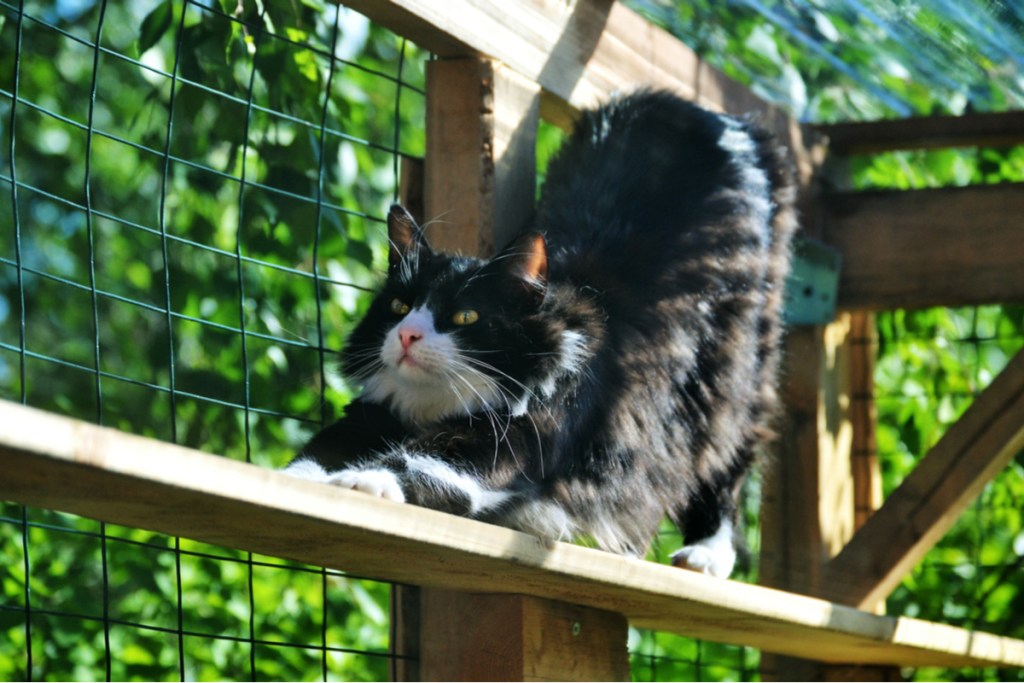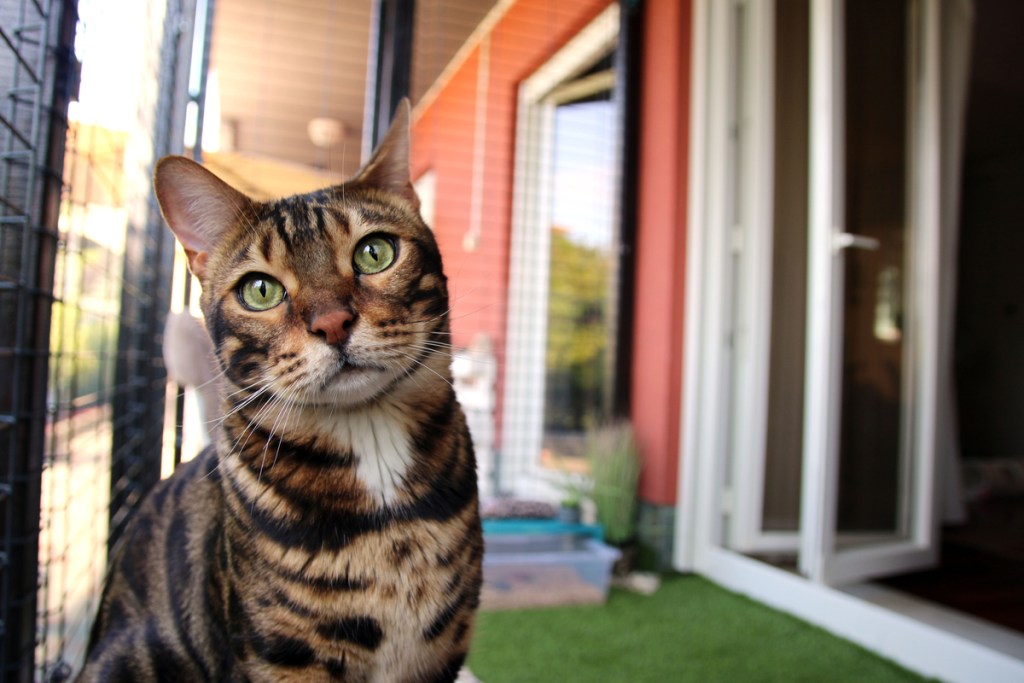For your indoor cat, a catio can be a freeing and exciting way to enjoy the outdoors safely. These enclosures can be small areas for your cat to get some air, but some cat owners build elaborate structures that are basically entire rooms located outside. The good news is, you can build a catio yourself as long as you have some basic construction plans — and even better, you can do it in a weekend. If you’re ready to begin, then start looking at some of the different types of catios that other cat owners have created. Then, you can start planning out your own.

Plan carefully
When it comes to building a catio, the only limits are really your imagination. Catios can be as simple as a box that you attach to the outside of a window, or they can be large, complex structures that are essentially big kennels for your cats in your backyard. The larger catio will require more money, time, and construction skills to build than a smaller unit. If this is your first time building a catio, consider staying small. You can always build a larger unit once you’re more familiar with how to build a catio.
As you decide which type of catio design is right for your cat, start drafting your plans. Be sure to include measurements on those plans so you know exactly how large the catio will be. Any catio will need a frame made of wood, and it will need to be entirely surrounded by a strong wire mesh for security. You will want to create one or more doors to the catio so you can access your cats and clean the space as needed.
Buy the right supplies
You’ll save time if you carefully make a list of all the supplies you’ll need and can get them all at the store at once. Depending on the type and size of catio you’re planning to build, these supplies may vary. If you’re still coming up with the design for your catio, it’s a good idea to make a list of the materials that you’ll need and then price them out at your local hardware store. Material costs can quickly add up, and you might want to make some modifications, like reducing the size of the catio, to help you stay within your budget.
Chances are, you’ll need some or all of the following:
- Lumber for framing
- Wire mesh to enclose the entire catio
- Hinges and latches for doors
- Nails or screws
- Fencing staples
- Concrete pavers or another material to use as the foundation base
- Accessories for indoor shelves, climbing units, toys, and more
If you don’t have them already, consider adding wire cutters and heavy-duty construction gloves to wear when handling the wire mesh.
When choosing a wire mesh, look for something heavy-duty and weather-resistant. A galvanized or powder-coated wire will resist rusting, meaning your catio will last longer. It’s important to buy a mesh that’s sturdy enough to withstand predators attempting to get through it. Look for a mesh with small openings since this will be stronger and more secure than a mesh with larger holes.

Catio construction tips
- When building your catio, always refer carefully to your plans and measure everything twice before making any cuts.
- Make sure that you create a strong base for the catio to stand on, since this base will carry most of the unit’s weight.
- You’ll also want to account for drainage around the catio. Laying gravel or pea stone can help address drainage issues and keep water from washing out the catio base.
- If you want to speed up your catio construction, have some friends over and host a catio-building party. Everyone can lend a hand with some basic construction, then enjoy pizza (your treat) later.
Building a catio doesn’t have to be terribly difficult, but it is important to plan out your project from the very beginning. The more detailed your plans and measurements are, the better the chance that your catio will be a success. When you’re building the unit, always think about safety. The catio needs to be predator-proof, and it also needs to safely keep your cat contained without risk of his being able to open the door or otherwise escape. Take your time building the catio and make sure that it’s strong and secure. Chances are, your cat will use it for years to come.


